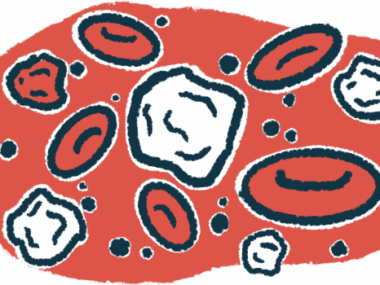Infections often cause of death after ANCA-associated vasculitis ID’d
Treatment with immunosuppressive medications is most intense in first year
Written by |

Infections are a leading cause of early death in adults with ANCA-associated vasculitis (AAV), being most common in the first year after a diagnosis when treatment with immunosuppressive medications is most intense, a single-center study in Australia suggests.
Hospitalizations due to infections tended to decrease after a dedicated vasculitis clinic was set up, where “multidisciplinary care models reduce barriers to evidence-based care, an essential component of improving outcomes in chronic diseases,” the researchers wrote. Vasculitis refers to blood vessel inflammation.
The findings emphasize the importance of this multidisciplinary care model to improve outcomes for people with AAV, the researchers said. Their study, “Burden of Infection-Related Hospitalization and the Impact of Multidisciplinary Care in ANCA-Associated Vasculitis: A Retrospective Cohort,” was published as a letter to the editor in the International Journal of Rheumatic Diseases.
AAV is an autoimmune disease where abnormal immune responses result in inflammation of small blood vessels. This can lead to damage in organs like the kidneys and the lungs.
Immunosuppressive medications can help AAV patients achieve and maintain remission, that is, when symptoms of AAV ease or disappear, and live longer. But because they weaken the immune system, they also increase the risk of infections, which can be serious or even life-threatening.
Cost of immunosuppressive burden in AAV
“While infections, cardiovascular disease, and pulmonary disease have been reported as leading reasons for hospitalization for AAV patients in the United States and Europe, trends in Australia are unknown,” wrote the researchers, who reviewed medical records from 164 adults diagnosed with AAV at Monash Health in Australia between 2000 and 2018. Regarding AAV types, 111 had microscopic polyangiitis (MPA) and 53 had granulomatosis with polyangiitis (GPA). On average, the patients were followed for seven years.
The researchers also wanted to know if multidisciplinary care, which has been beneficial for some rheumatological diseases, also “improves outcomes in people with AAV.” Rheumatological diseases include inflammatory and autoimmune conditions that affect the musculoskeletal system and tissues that provide support and structure to other tissues and organs.
Within the first year after their diagnosis, 64 patients (39%) were hospitalized, with 22 (13%) admitted due to infections. These 22 patients had 24 hospital stays that added up to about 406 days, with a median length of stay of 9.4 days.
The rate of infection-related hospitalizations was generally comparable before and after 2010, when rituximab, which was approved as Rituxan for MPA and GPA, and has generics available, began being more used in this patient population.
The findings show that, while preventive antibiotics are routinely used, “infection rates are highest in the first [six to 12] months [post-diagnosis] when the immunosuppressive burden is highest,” the researchers wrote.
Reduced hospitalization rates
In 2014, Monash Health set up a dedicated vasculitis clinic with a multidisciplinary team of kidney specialists, rheumatologists, and a nurse trained in vasculitis, with support from infectious disease, respiratory, and ear, nose, and throat specialists in other clinics. After it opened, there was a significant decrease in the overall rate of hospitalizations, from 70 to 51 per 100 person-years. Person-years account for the number of patients studied and the time each was observed. For example, 100 person-years could mean 100 patients were studied over a year.
While the rate of infection-related hospitalizations was cut in more than half after the clinic was established — from 18 to 8 per 100 person-years — the change wasn’t statistically significant.
“It is possible that the increased use of rituximab and the adoption of lower dose corticosteroid protocols have resulted in the lower rate of infectious complications observed more recently,” the researchers wrote.
Forty-six patients died during follow-up, with no significant differences in survival rates over time between MPA and GPA patients. Of the 32 patients who died within the first year after their diagnosis — 24 with MPA, eight with GPA — most (97%) had kidney problems. The most common causes of death were infections and cancer with MPA, and infections and cardiovascular disease with GPA.
“Infection-related hospitalizations remain a significant burden for patients with AAV,” the researchers wrote. “The establishment of a multidisciplinary vasculitis clinic was associated with reduced hospitalization rates for any cause, with a trend toward reduced hospitalization rates for infection-related hospitalizations, supporting this care model for improving outcomes for patients with this chronic, relapsing disease.”






